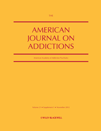Screening, Brief Intervention, and Referral to Treatment (SBIRT) for Substance Use in a School-Based Program: Services and Outcomes
Abstract
Background: Despite the advantages of using high schools for conducting school-based Screening, Brief Intervention, and Referral to Treatment (SBIRT) programs for adolescent substance misuse, there have been very few studies of Brief Interventions (BIs) in these settings.
Objectives: This multi-site, repeated measures study examined outcomes of adolescents who received SBIRT services and compared the extent of change in substance use based on the intensity of intervention received.
Methods: Participants consisted of 629 adolescents, ages 14–17, who received SBIRT services across 13 participating high schools in New Mexico. The level of service received and number of sessions were collected through administrative records, while the number of self-reported days in the past month of drinking; drinking to intoxication; and drug use were gathered at baseline and 6-month follow-up.
Results: BI was provided to 85.1% of adolescents, while 14.9% received brief treatment or referral to treatment (BT/RT). Participants receiving any intervention reported significant reductions in frequency of drinking to intoxication (p < .05) and drug use (p < .001), but not alcohol use, from baseline to 6-month follow-up. The magnitude of these reductions did not differ based on service variables. Controlling for baseline frequency of use, a BT/RT service level was associated with more days of drinking at 6-month follow-up (p < .05), but was no longer significant when controlling for number of service sessions received.
Conclusions and Scientific Significance: These findings support school-based SBIRT for adolescents, but more research is needed on this promising approach. (Am J Addict 2012;21:S5–S13)




